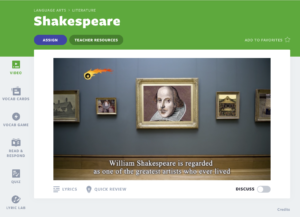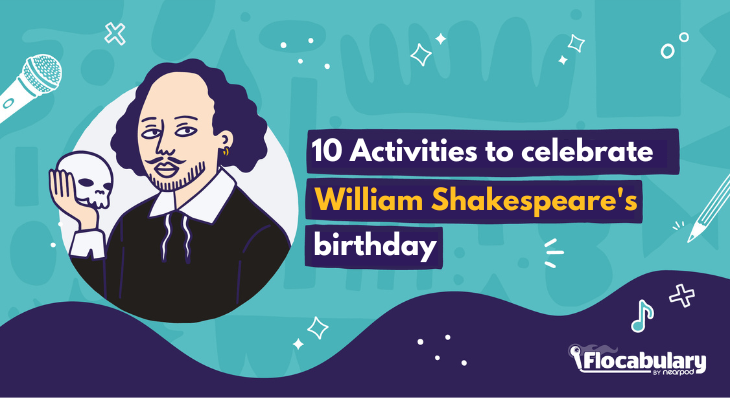
10 Activities to celebrate William Shakespeare’s birthday
When was William Shakespeare’s birthday?
William Shakespeare was most likely born on April 23, 1564, in his birthplace of Stratford-upon-Avon, England. Therefore, April 23rd is known as Shakespeare Day. According to History.com, he was baptized on April 26th, and traditionally, newborns were baptized 3 days after their birth date. This is why historians believe he was born on April 23rd, which is also presumed to be the date Shakespeare died in 1616.
10 Activities to celebrate William Shakespeare’s birthday
Celebrate Shakepeare’s birthday with your students using these 10 fun Shakespeare activities from Flocabulary! Or, if you’d like, use these activities at your own birthday party! They’re educational, too. We’re not talking about Pin the Tail on Puck (though, that isn’t such a bad idea…).
Flocabulary’s 1,300+ standards-aligned, video-based lessons with activities support vocabulary acquisition and comprehension skills across K-12 subjects. These high-quality videos captivate students and create an impactful and memorable learning experience by harnessing the power of hip-hop music, visual art, storytelling, humor, drama, and poetry.
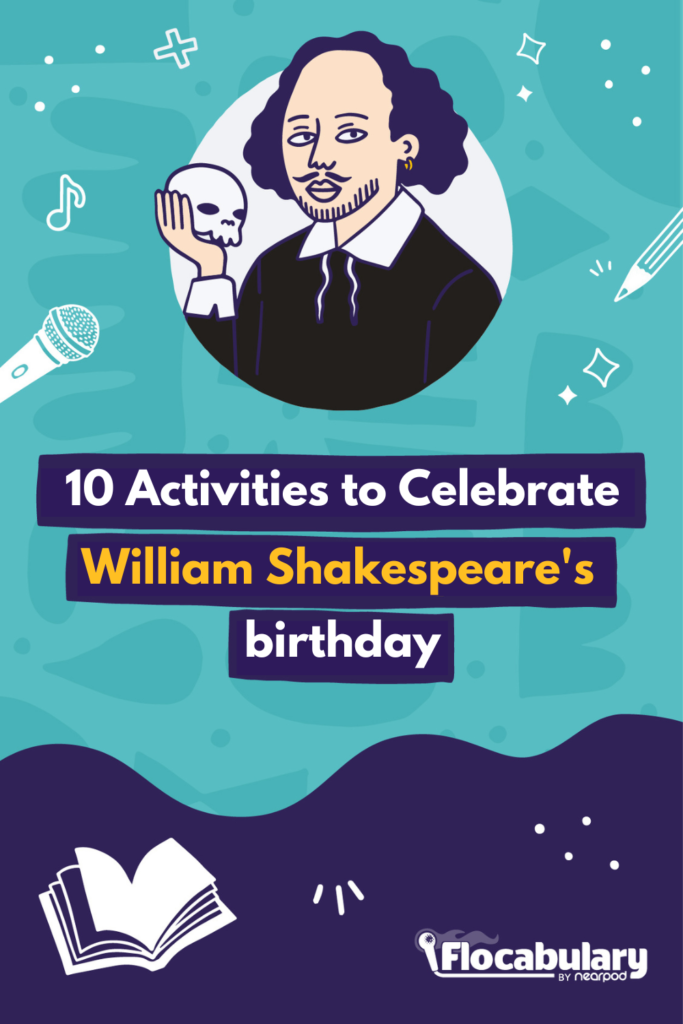
Captivate students and make learning experiences memorable and interesting through Flocabulary. Teachers can sign up below to access the activities and lessons shared in this blog post. Administrators can contact us below to learn more about the power of Flocabulary Plus.
1. Before kicking off an activity, introduce students to William Shakespeare
This lesson gives a shout-out to the original master of wordplay, William Shakespeare. The video introduces students to Shakespeare, describing his major accomplishments and the characteristics of his tragedies, comedies, and histories. It provides examples of the figurative language that peppers The Bard’s plays and the many words and phrases he coined. Use this in your lesson plan along with teaching about William Shakespeare’s early life, lost years, and more.
2. Write a birthday Sonnet
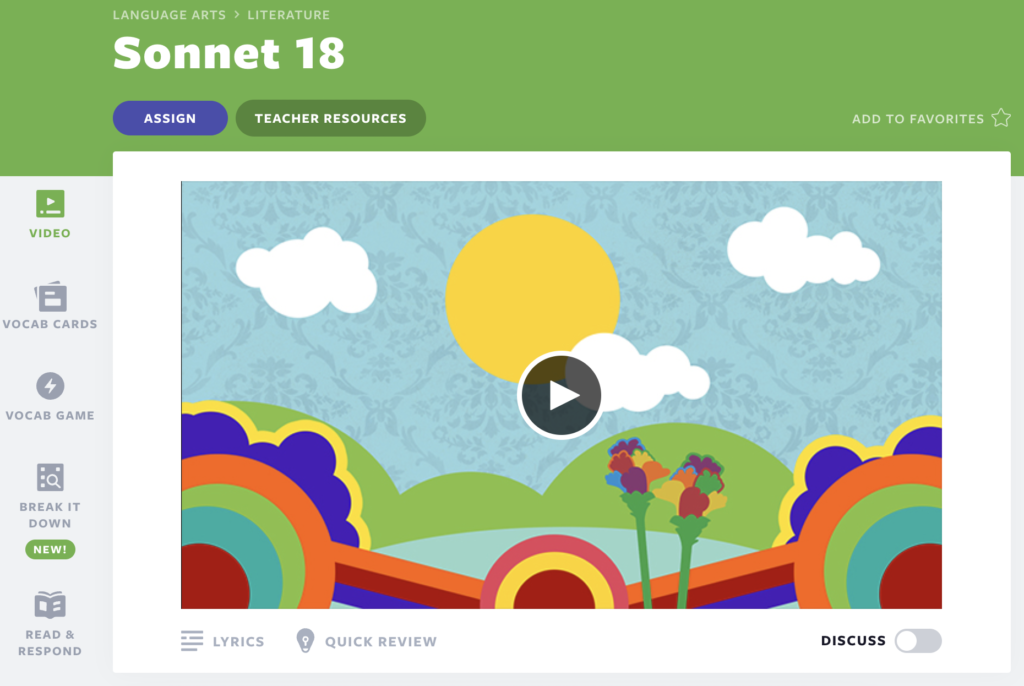
Encourage students to write a sonnet about Shakespeare…in the Shakespearean sonnet form. Shakespeare wrote 154 sonnets and his most popular is Sonnet 18. Remind them to use iambic pentameter, as well as the ABAB / CDCD / EFEF / GG rhyming format. Listen to Flocabulary rap Shakespeare’s Sonnet 18 over some beats.
For example, they can write:
To the man who wrote all those lovely plays,
I wish you the most happy of birthdays.
3. Write a birthday rap
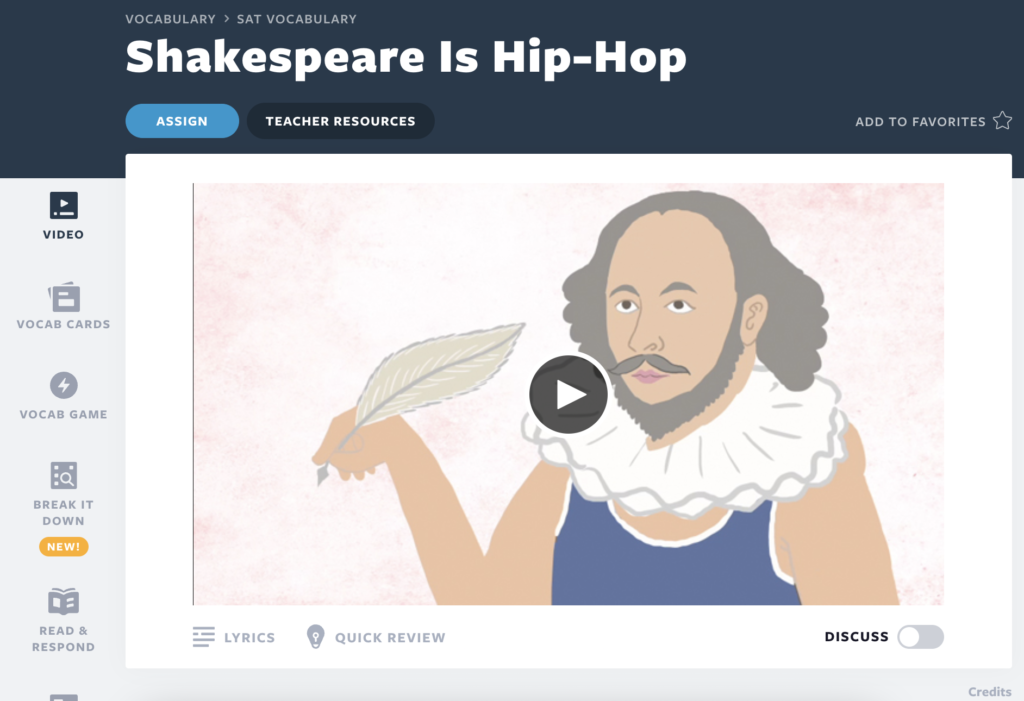
Are Sonnets a little too formal for your students? Have them write an ode to the Bard in a more modern mode of rhyme: rap! Use Flocabulary’s Lyric Lab to create a rap using vocabulary words from our Shakespeare is Hip-Hop lesson video. This song includes words that students are likely to encounter on the SAT.
4. Write a birthday card using Ye, Thou, Thee, Thy, and Thine
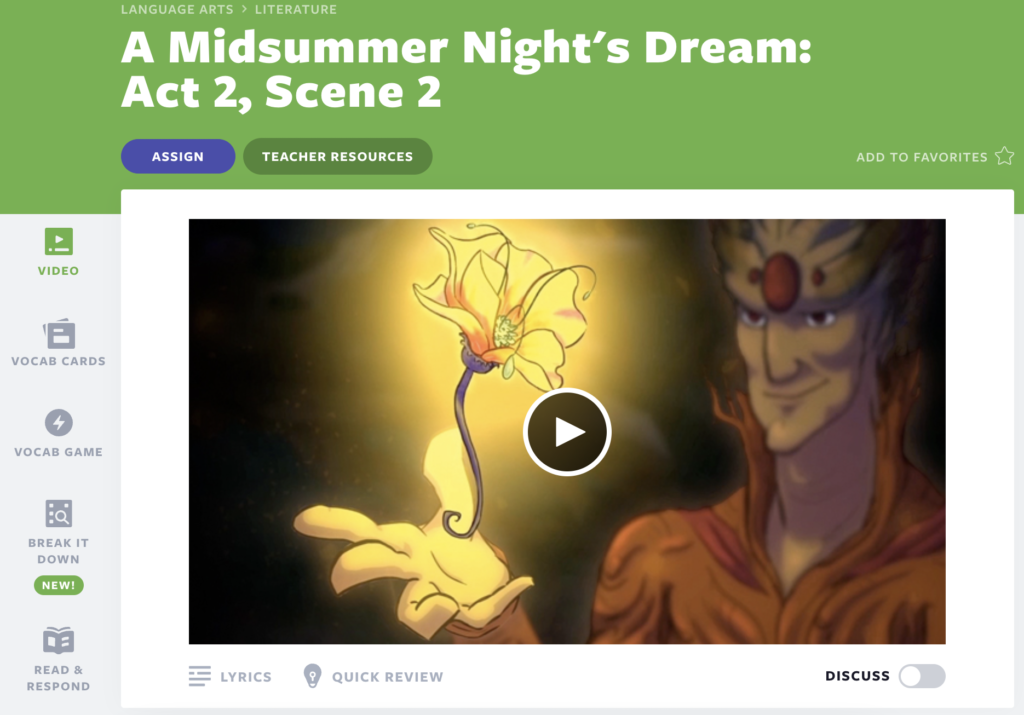
These old-fashioned pronouns can be tough. First, teach students how to use thou, thee, thy, and others here. Then listen to Flocabulary’s Midsummer Night’s Dream Lullaby, which uses these words, and “translate” the lines to modern pronouns. Now students are ready to write their birthday cards and put their new and old words to use. “Dear Shakespeare, I hope thy birthday is going well…”
5. Eat food from your favorite play
Students have done a lot of writing so far at this party to celebrate Shakespeare Day. Now it’s time to eat! Shakespeare included many references to food. So take some time perusing this great list of foods from Shakespeare’s plays, and prepare some of them for the class together. Perhaps you want some “great meals of beef and iron and steel” (Henry V), some “brown bread and garlic” (Measure for Measure), or “mutton and porridge” (Love’s Labour’s Lost)?
6. Create a modernized dialogue from Shakespeare’s play
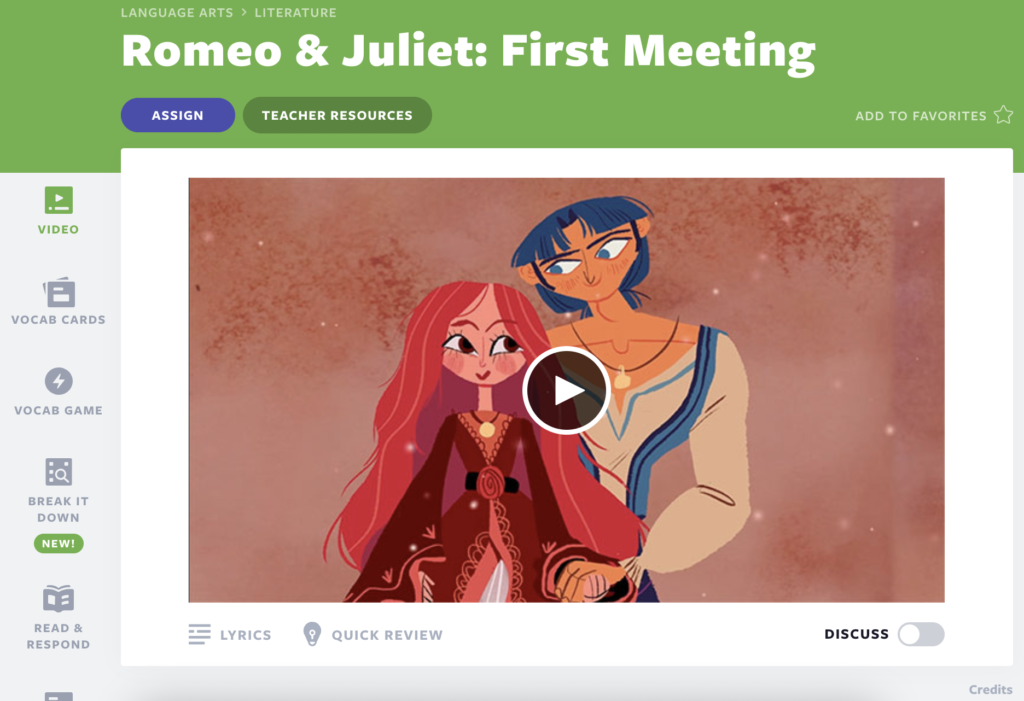
Celebrate Shakespeare Day with a modern twist by engaging students in a lively writing activity. Select a short, memorable dialogue from his work, then have students translate this line into contemporary language. For example, Flocabulary’s Romeo and Juliet video lesson is a modernized song of the first dialogue between these characters. To capture the essence and emotion of the original text, have them craft catchy lyrics based on the modernized dialogue and choose a simple melody or popular tune that complements the mood of the scene.
7. Play games from the Elizabethan Era
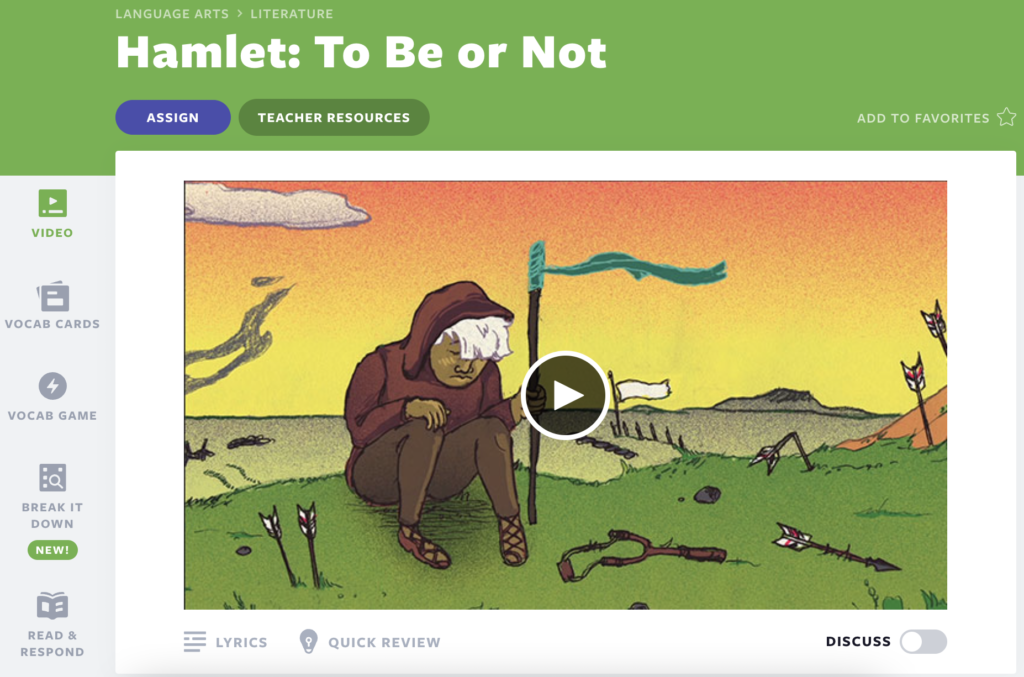
After snacking on your mutton and porridge, play a game Shakespeare wrote and mentioned in his plays. Shoot some archery that conjures this metaphor from Romeo and Juliet: “Shot thorough the ear with a love-song; the very pin of his heart cleft with the blind bow-boy’s butt-shaft.” You could also play “Handy-Dandy” from King Lear, “Flap Dragon” from Henry IV, or “Hide Fox” from Hamlet.
8. Shakespearean social media
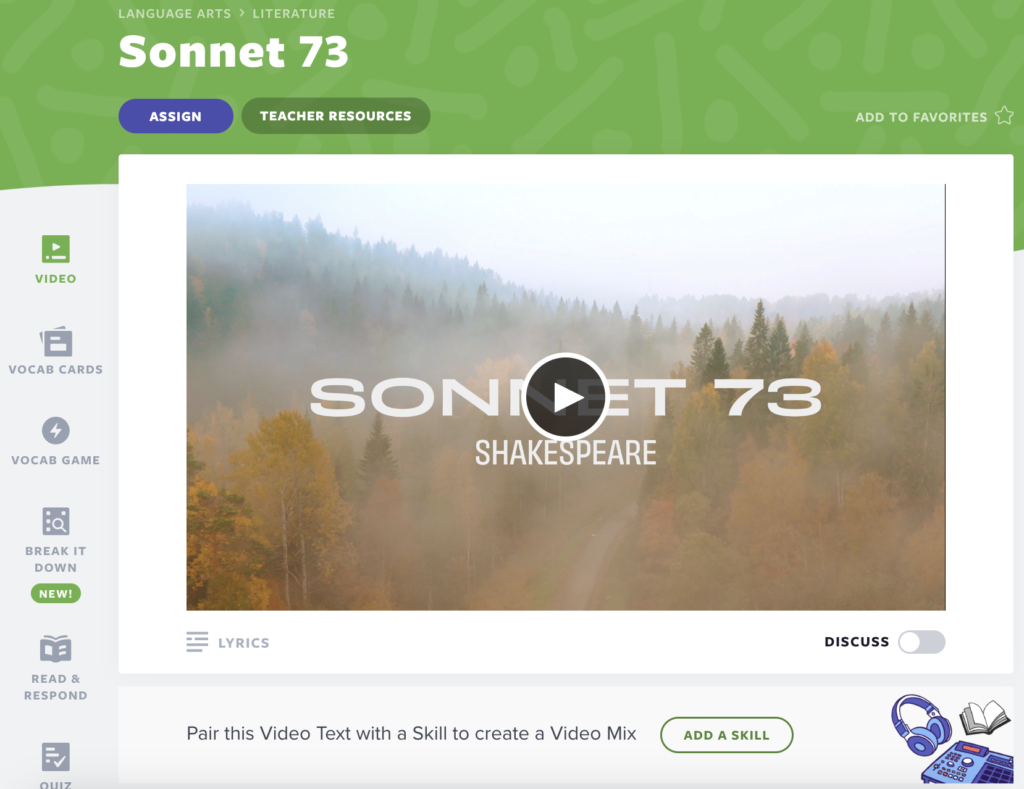
Have students create modern-day social media posts inspired by Sonnet 73. Begin by exploring the themes of aging and love found in the sonnet using Flocabulary’s lesson on Sonnet 73. Then, have students work in pairs to reinterpret the sonnet’s imagery into a series of posts from social media platforms like Instagram or Tik Tok. Encourage them to use filters, emojis, and captions to capture the essence of each quatrain.
9. Trial by text
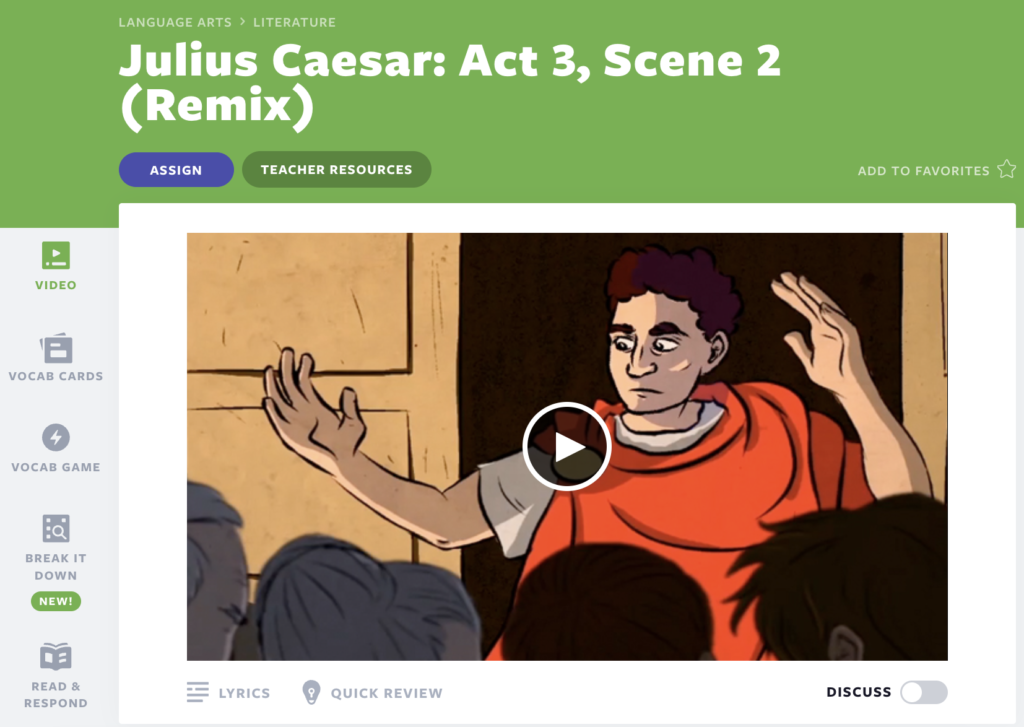
Bring the tension of Julius Caesar: Act 3, Scene 2 to life with a modern-day “Trial by Text” activity. Utilize Flocabulary’s lesson on Julius Caesar to introduce students to the characters and conflicts in the play. Then, stage a mock trial where students take on the roles of characters like Brutus, Cassius, and Mark Antony. This interactive activity encourages critical thinking and analysis of Shakespearean drama in a contemporary context.
10. Character switcheroo
Explore the depths of Shakespearean tragedy by merging elements from Othello and Macbeth. In this imaginative exercise, students will analyze characters from both plays through the lens of an alternate universe where they find themselves in each other’s worlds. After delving into the themes and characters of Othello and Macbeth using Flocabulary’s lessons, students will be divided into groups and assigned pairs of characters from the two plays. They will then collaborate to analyze the personalities, motivations, and actions of their assigned characters and reimagine how they would navigate the challenges of the alternate setting. Students can perform their scenes for the class, followed by a discussion about the insights gained into the characters, themes, and universality of Shakespeare’s tragedies.
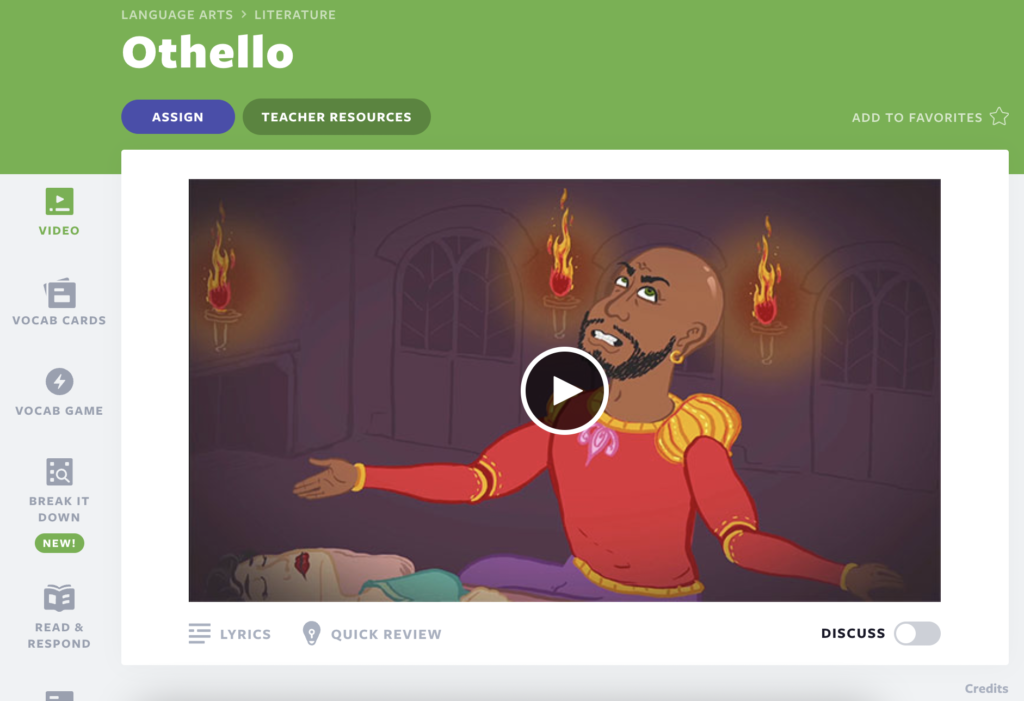
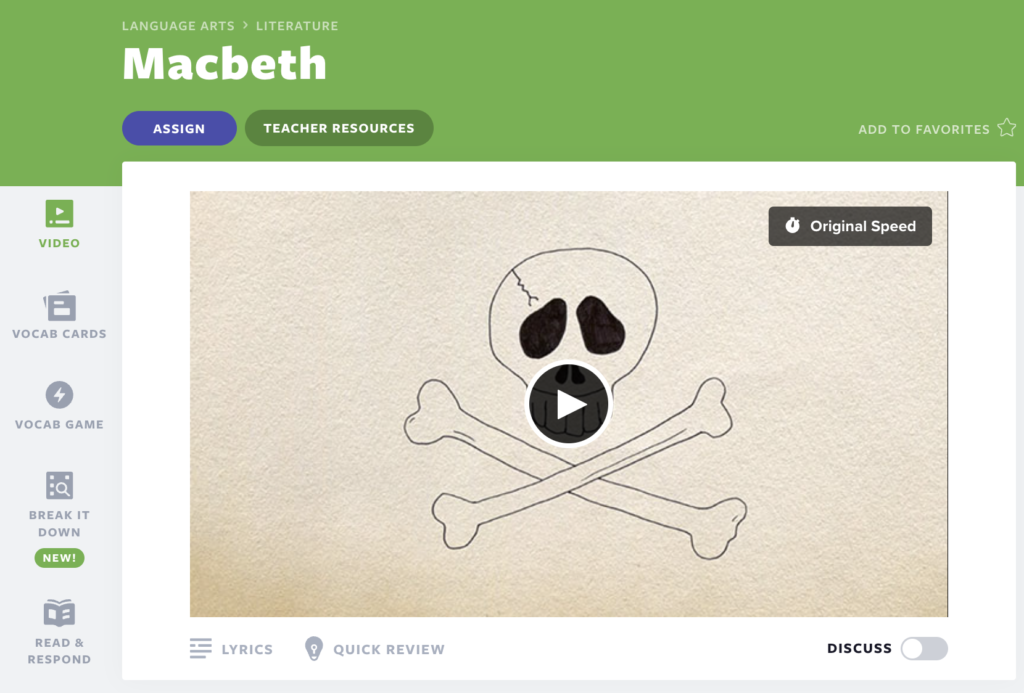
Celebrate William Shakespeare’s birthday with Flocabulary’s activities
We’re so excited to see you use these tips in your classroom! These activities and video lessons will have your students engaged, focused, learning, and having fun. Celebrate Shakespeare Day by bringing his work into the classroom with a creative twist using these Flocabulary resources.
Captivate students and make learning experiences memorable and interesting through Flocabulary. Teachers can sign up below to access the activities and lessons shared in this blog post. Administrators can contact us below to learn more about the power of Flocabulary Plus.

